
How to Use Atlas Scientific ORP Board: Examples, Pinouts, and Specs
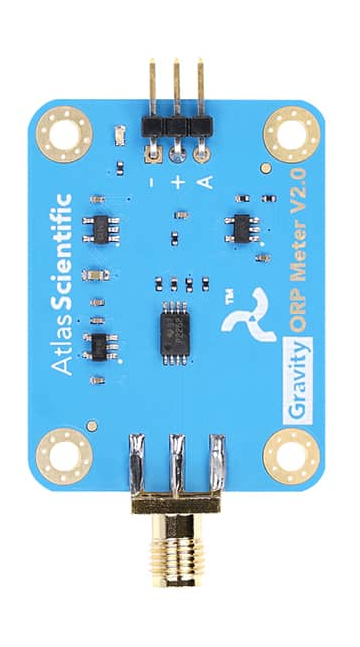
 Design with Atlas Scientific ORP Board in Cirkit Designer
Design with Atlas Scientific ORP Board in Cirkit DesignerIntroduction
The Atlas Scientific ORP Board (part ID: KIT-104O) is a high-quality circuit component designed for measuring the oxidation-reduction potential (ORP) in aqueous solutions. ORP is a critical parameter in water quality analysis, indicating the degree to which a substance can oxidize or reduce another substance. This board is commonly used in environmental monitoring, aquaculture, and water treatment processes.
Explore Projects Built with Atlas Scientific ORP Board
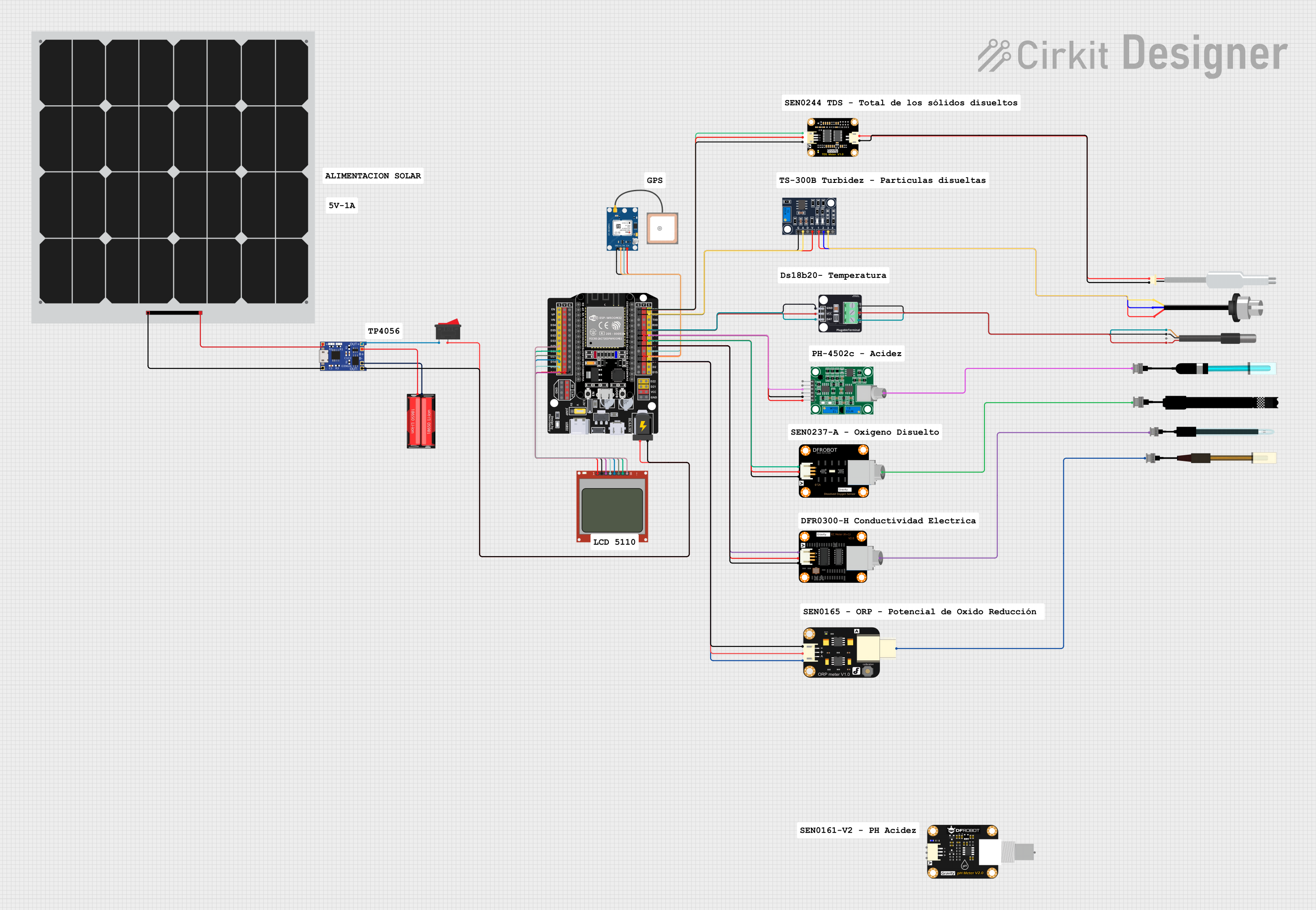
 Open Project in Cirkit Designer
Open Project in Cirkit Designer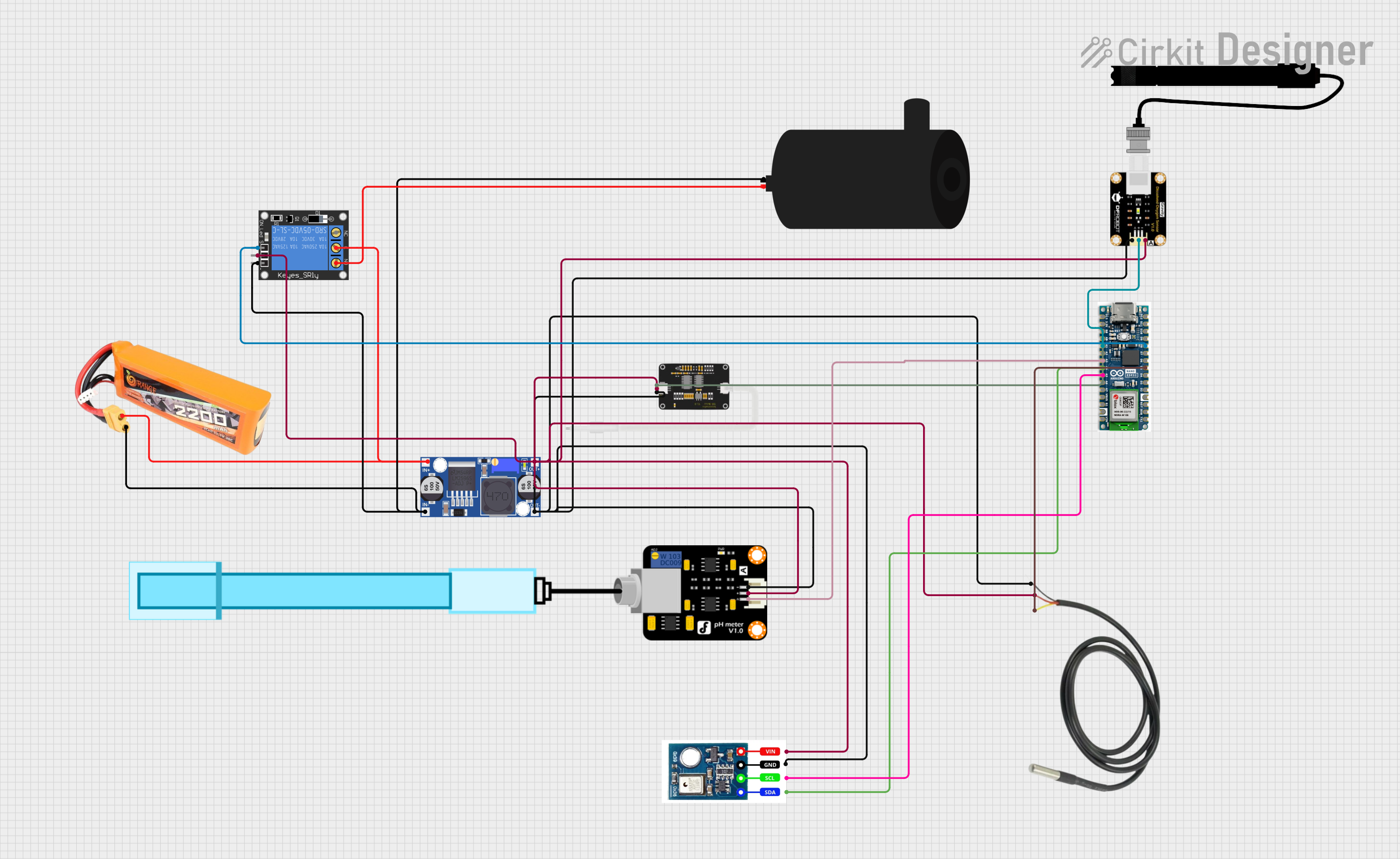
 Open Project in Cirkit Designer
Open Project in Cirkit Designer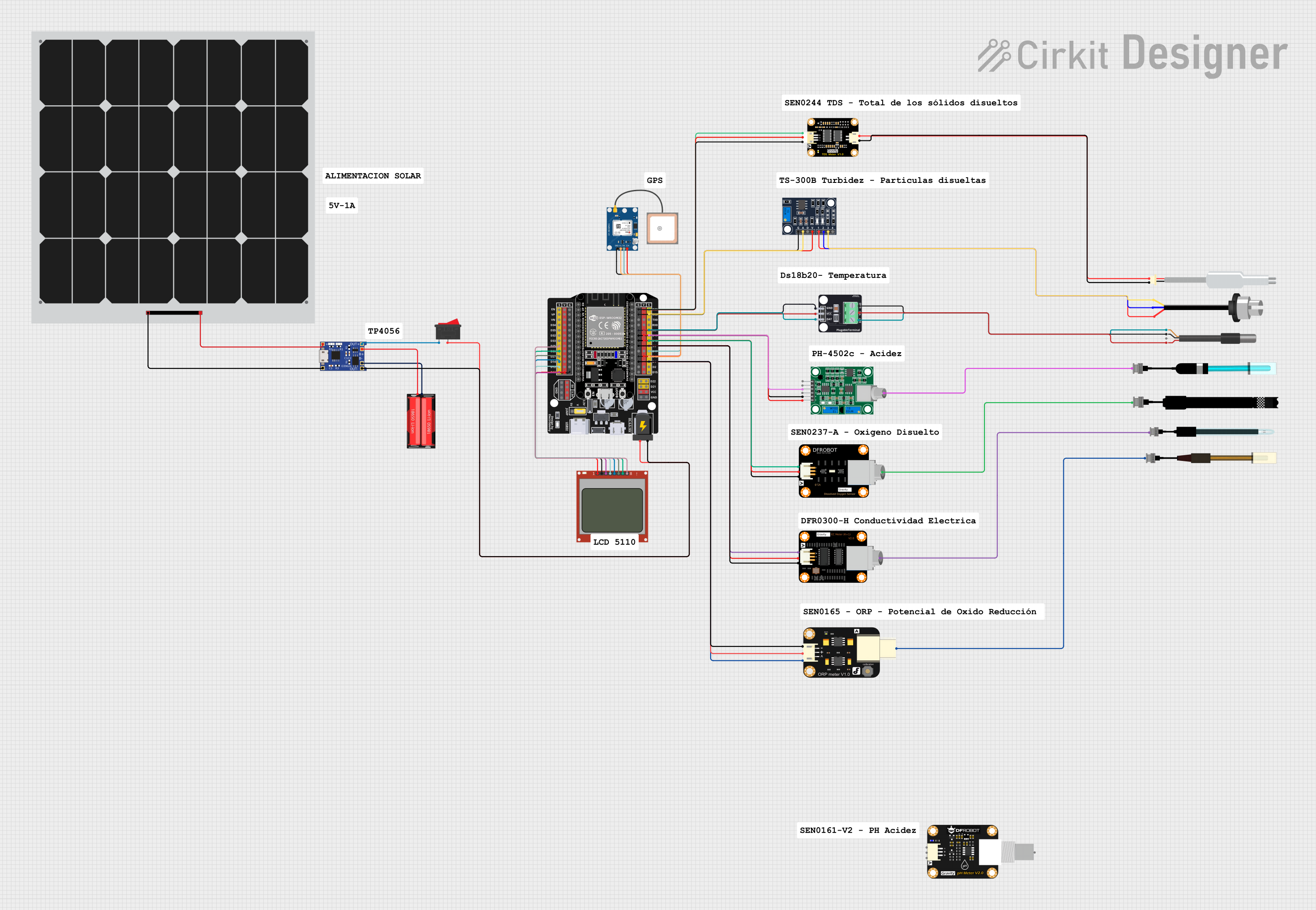
 Open Project in Cirkit Designer
Open Project in Cirkit Designer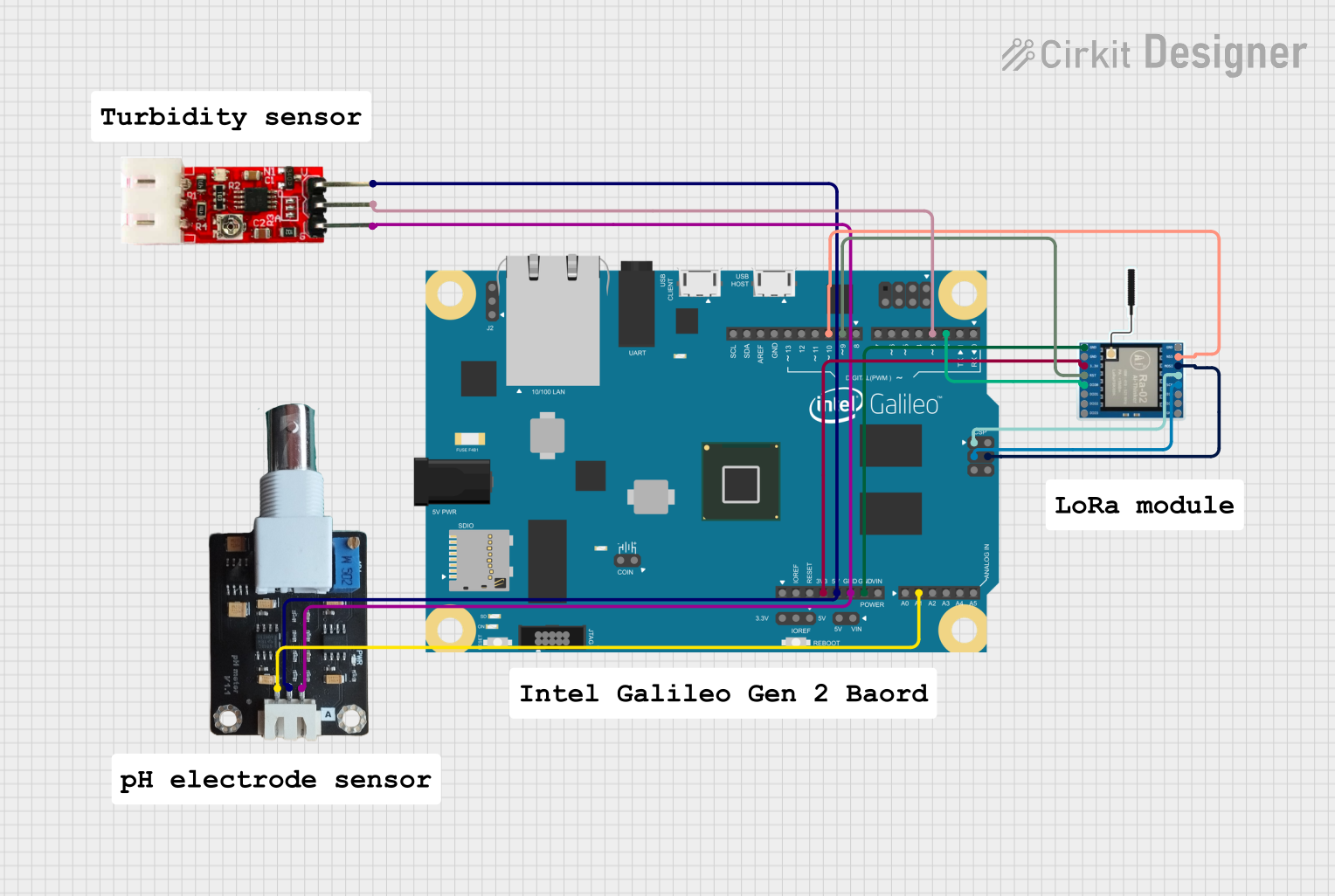
 Open Project in Cirkit Designer
Open Project in Cirkit DesignerExplore Projects Built with Atlas Scientific ORP Board

 Open Project in Cirkit Designer
Open Project in Cirkit Designer
 Open Project in Cirkit Designer
Open Project in Cirkit Designer
 Open Project in Cirkit Designer
Open Project in Cirkit Designer
 Open Project in Cirkit Designer
Open Project in Cirkit DesignerCommon Applications and Use Cases
- Water quality monitoring
- Aquaponics and hydroponics systems
- Aquariums and reef tank monitoring
- Wastewater treatment
- Soil samples analysis
- Chemical reaction monitoring
Technical Specifications
Key Technical Details
- Measurement Range: ±999 mV
- Accuracy: ±1 mV
- Response Time: 95% in 1 second
- Temperature Range: 1°C to 99°C
- Max Pressure: 689 kPa (100 PSI)
- Max Depth: 60m (197 ft)
- Weight: 49 grams
Pin Configuration and Descriptions
| Pin Number | Function | Description |
|---|---|---|
| 1 | BNC Connector | Connects to the ORP probe |
| 2 | Gain | Sets the gain (unused in most applications) |
| 3 | Temp | Optional temperature sensor input |
| 4 | GND | Ground |
| 5 | V+ | Positive supply voltage (3.3V to 5V) |
| 6 | TX (Output) | Serial data output (TX) |
| 7 | RX (Input) | Serial data input (RX) |
Usage Instructions
How to Use the Component in a Circuit
- Power Supply: Connect the V+ pin to a 3.3V or 5V power supply and the GND pin to the ground.
- ORP Probe Connection: Attach the ORP probe to the BNC connector.
- Data Communication: Connect the TX and RX pins to a microcontroller or computer to communicate with the board using serial communication.
- Temperature Compensation (Optional): If accurate measurements are needed across varying temperatures, connect a temperature sensor to the Temp pin.
Important Considerations and Best Practices
- Always calibrate the ORP probe with a known standard solution before use.
- Avoid exposing the board to moisture or submerging it, as it is not waterproof.
- Use shielded cables for connections, especially in environments with high electrical noise.
- Ensure that the power supply is stable and within the specified voltage range to prevent damage to the board.
Troubleshooting and FAQs
Common Issues
- Inaccurate Readings: Ensure the probe is calibrated correctly. Check for any contamination on the probe's surface and clean it as per the manufacturer's instructions.
- No Data Output: Verify that the power supply is connected properly and within the specified range. Check the serial communication wiring and settings.
Solutions and Tips for Troubleshooting
- Calibration: Perform regular calibration with standard solutions to maintain accuracy.
- Wiring: Double-check all connections, including the BNC connector, for any loose wires or poor contacts.
- Serial Communication: Ensure the baud rate and data format match the board's specifications and your microcontroller's settings.
FAQs
Q: Can the ORP Board be used in saltwater applications? A: Yes, the ORP Board is suitable for use in both freshwater and saltwater applications.
Q: What is the recommended calibration solution? A: Atlas Scientific provides ORP calibration solutions that are specifically designed for use with their probes.
Q: How often should the ORP probe be calibrated? A: Calibration frequency depends on usage, but it is generally recommended to calibrate the probe once a month or whenever the accuracy is in question.
Example Code for Arduino UNO
#include <SoftwareSerial.h>
SoftwareSerial mySerial(10, 11); // RX, TX
void setup() {
Serial.begin(9600);
mySerial.begin(9600);
}
void loop() {
if (mySerial.available()) {
char inChar = (char)mySerial.read();
Serial.print(inChar);
}
if (Serial.available()) {
char inChar = (char)Serial.read();
mySerial.print(inChar);
}
}
Code Comments
SoftwareSerial mySerial(10, 11);sets up a software serial port on pins 10 (RX) and 11 (TX).Serial.begin(9600);andmySerial.begin(9600);initialize both the hardware and software serial ports at a baud rate of 9600.- The
loop()function reads from one serial port and writes to the other, allowing for communication between the Arduino and the ORP Board.
Note: This example assumes that the ORP Board is set to the default baud rate of 9600. If you have changed the default settings, adjust the baud rate in the code accordingly.